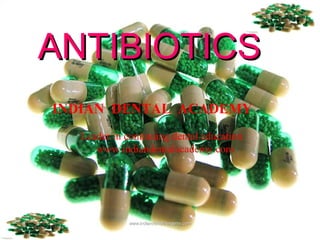The document is a comprehensive overview of antibiotics in the context of dental medicine, detailing their history, classification, and critical principles of administration. It discusses the problems associated with antimicrobial agents, including toxicity, hypersensitivity reactions, and the development of drug resistance. Additionally, it outlines the therapeutic and prophylactic indications for antibiotic use in dentistry, guided by established recommendations.























































































































